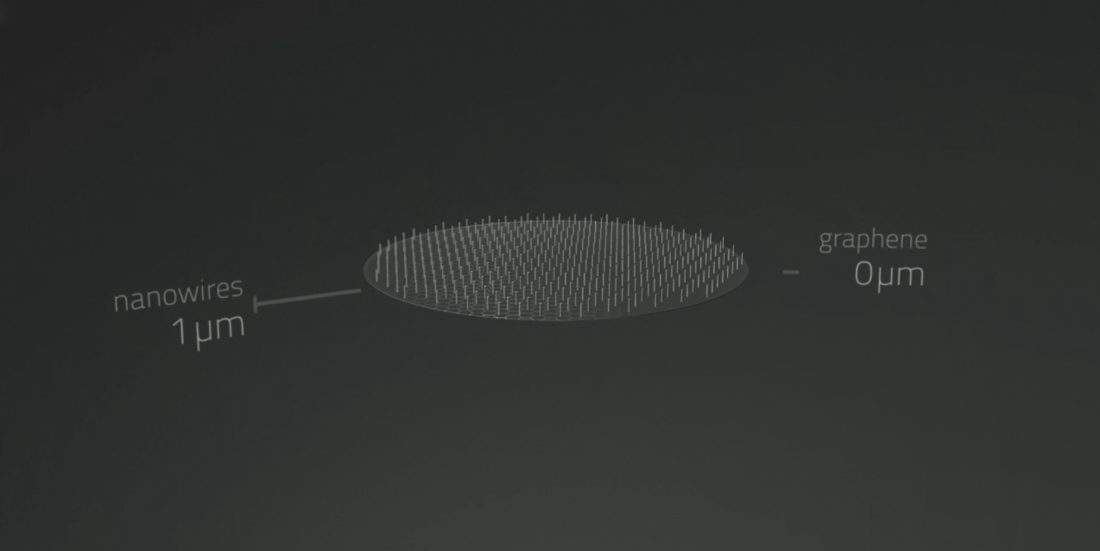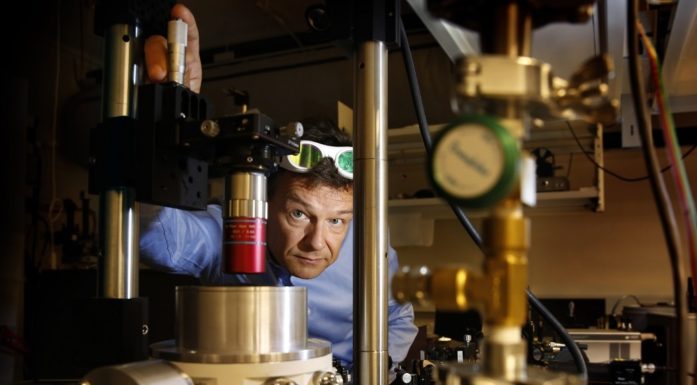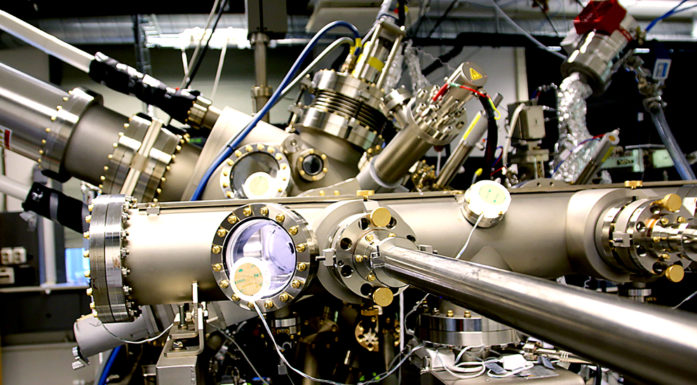Semiconductors grown on graphene
Researchers at NTNU have patented and are commercializing GaAs nanowires grown on graphene, a hybrid material with competitive properties.
Semiconductors grown on graphene are expected to become the basis for new types of device systems, and could fundamentally change the semiconductor industry. The technology underpinning their approach has recently been described in a publication in the American research journal Nano Letters.
The new patented hybrid material offers excellent optoelectronic properties, says Professor Helge Weman, a professor at NTNU’s Department of Electronics and Telecommunications, and CTO and co-founder of the company created to commercialize the research, CrayoNano AS. “We have managed to combine low cost, transparency and flexibility in our new electrode,” he adds.
The patented method of growing semiconductor nanowires on atomically thin graphene uses MBE (Molecular Beam Epitaxy) to grow the nanowires.
“We do not see this as a new product,” Weman says. “This is a template for a new production method for semiconductor devices. We expect solar cells and light emitting diodes to be first in line when future applications are planned.”
Sunny outlook for nanowires
“Graphene is experiencing tremendous attention worldwide,” Weman says. “Companies like IBM and Samsung are driving this development in the search for a replacement for silicon in electronics as well as for new applications, such as flexible touch screens for mobile phones. Well, they need not wait any more. Our invention fits perfectly with the production machinery they already have. We make it easy for them to upgrade consumer electronics to a level where design has no limits.”
This invention is thus thought to be an enabler for a future platform for electronics and optoelectronics devices. One possible device with very large market potential is a nanowire solar cell. This type of solar cell has the potential to be efficient, cheap and flexible at the same time. The invention also makes it possible to imagine a future with self-powered nanomachines and advanced 3D integrated circuits built on graphene and semiconductor nanowires, enabling smaller and more efficient electronics.
Weman himself envisions flexible self-powered consumer electronics integrated into everything from clothes to notepads, and of course traditional cell phones, tablets and exercise accessories.
“Semiconductors grown on graphene could become the basis for new types of device systems, and could transform the semiconductor industry by introducing graphene as a preferred substrate for many applications,” he says.
For more information, see: crayonano.com





